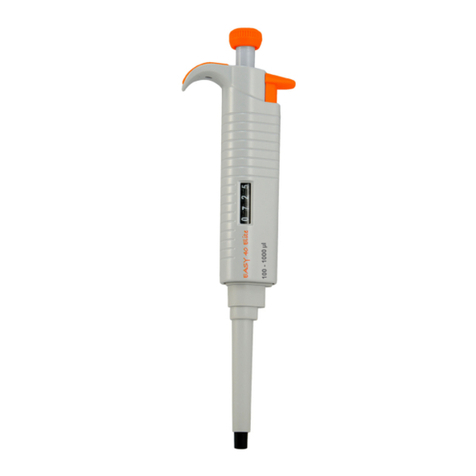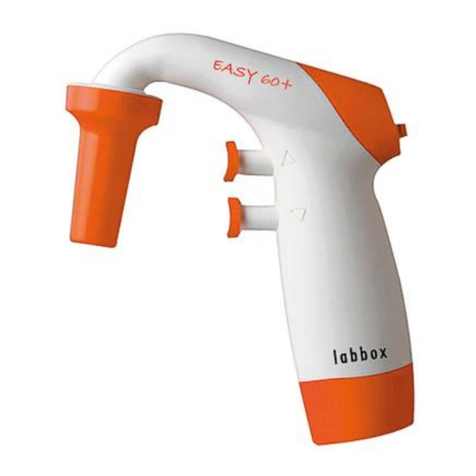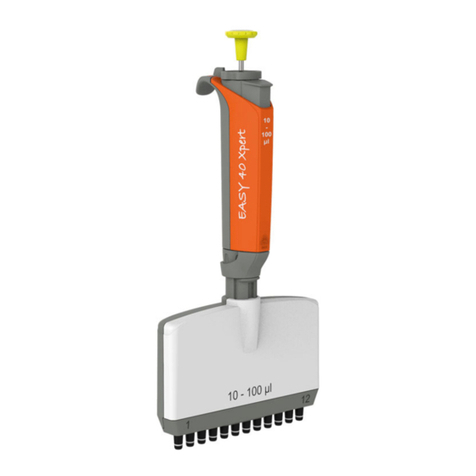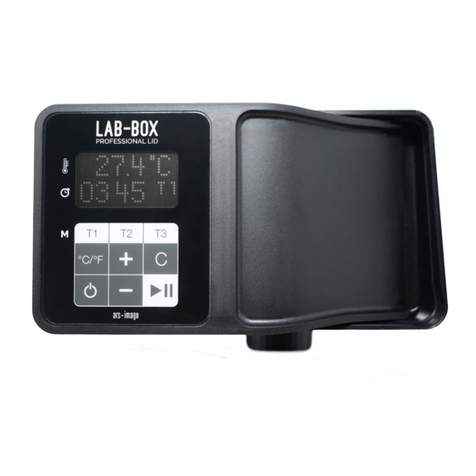
1. Safety instructions
Connect the equipment to a grounded power supply to ensure the safety of the
equipment and the experiment. Connect the power when the equipment requires it.
Place the Digital burette EASY 70 on a flat, horizontal, and stable table, leaving at
least 30 cm of free space on each side. Make sure that the surface is adequate for
the device’s weight.
The Digital burette EASY 70 must be used only by previously qualified staff that is
familiar with the equipment and knows how to operate it according to the
instructions manual.
Caution –the Digital burette EASY 70 can have magnetic effects and the staff must
keep in mind the magnetic field; for example, in cases like data storage, artificial
pacemakers…
Carefully read the instructions in this manual before using the device.
Do not operate this instrument in any manner not described in this ‘User manual’.
Ensure that the electrical outlet matches the voltage and power required for this
equipment.
In case of abnormal circumstances during the manipulation of the digital Burette EASY 70,
please turn off the equipment and contact your supplier.
Keep the equipment away from high electromagnetic fields.
The liquid-path of your digital burette is made of borosilicate glass, FEP and PTFE. Do
not apply it in handling liquids like hydrofluoric acid.
The instrument could become clogged or damaged by solid particles in a turbid liquid
such as activated carbon.
The plastic parts of your digital burette could be in swelling condition if concentrated acid,
alkaline acid, methylbenzene, benzene and other nonpolar organic solvents are put into
use.
Keep your digital burette away from the highly combustible carbon disulfide.
Keep the equipment out of corrosive atmospheres.
The equipment can only be disconnected from the socket by pulling on the base of the
plug, not the cable.
Digital burette cannot be autoclaved.
Do not put your digital burette in contact with corrosive gas like HCL smog.
The precautions described in this ‘User manual’ are carefully developed in an attempt to
cover all the possible risks. However, it is also important that you are alert for unexpected
incidents.
































